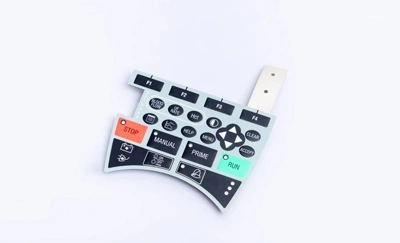
In the realm of user interfaces, backlight membrane switches have become a game-changer. Effective backlighting not only improves functionality but also enhances the aesthetic appeal of devices. This article delves into the nitty-gritty of enhancing backlight effectiveness in these switches, focusing on structural design, LED usage, circuitry, and a comparative analysis of backlighting technologies.
The design of a membrane switch plays a crucial role in its backlighting effectiveness. The choice of materials, such as diffusers and overlays, can significantly impact how light is distributed across the switch. Using materials that enhance light diffusion ensures a more uniform and appealing backlight.

LEDs are a popular choice for backlighting due to their brightness and efficiency. The strategic placement of LEDs is vital for achieving an even distribution of light. Additionally, selecting the right color and intensity of LEDs can greatly affect the user experience, allowing for customization according to the application's needs.
The circuit design in a backlight membrane switch is as important as the LEDs themselves. Techniques like using light guides and optimizing the circuit layout are essential for achieving uniform lighting. The right circuit design can prevent hotspots and ensure that the entire switch is evenly lit.
Different technologies offer various advantages and limitations in backlighting membrane switches.
Advantages: LEDs are highly bright, energy-efficient, and come in a wide range of colors.
Disadvantages: They can create uneven lighting and generate heat, which needs to be managed.
Advantages: EL provides a uniform light distribution and consumes less power.
Disadvantages: It has limited color options and a shorter lifespan compared to LEDs.
Advantages: Fiber optics ensure even light distribution without heat emission.
Disadvantages: They can be complex to implement and more costly than other options.
Effective backlighting in membrane switches is a blend of art and science. The choice between LEDs, EL, and fiber optics depends on the specific requirements of the application. Niceone-keypad, with its expertise in this field, can guide customers in choosing the right technology for their needs.
How do material choices affect backlighting in membrane switches?
Material choices impact light diffusion and overall backlight uniformity.
What are the key factors in LED placement for membrane switches?
Even light distribution, intensity, and color choice are crucial factors.
How does EL backlighting differ from LED in terms of user experience?
EL provides more uniform lighting, while LEDs offer brighter and more color options.
What are the applications where fiber optic backlighting is preferred?
In applications requiring even lighting and minimal heat emission.
Why is circuit design important in backlight membrane switches?
It ensures even distribution of light and prevents hotspots.
Feature/Technology | LED Backlighting | Electroluminescent (EL) Backlighting | Fiber Optic Backlighting |
Brightness | High | Moderate | Moderate |
Energy Efficiency | Good | Excellent | Good |
Color Options | Wide Range | Limited | Limited |
Light Distribution | Can be uneven | Uniform | Even |
Heat Emission | Moderate to High | Low | None |
Lifespan | Long | Shorter than LEDs | Long |
Cost | Moderate | Low | High |
Application Suitability | Versatile, suitable for various applications | Best for uniform, non-glaring light | Ideal for even lighting without heat issues |
Customization Flexibility | High | Low | Moderate |